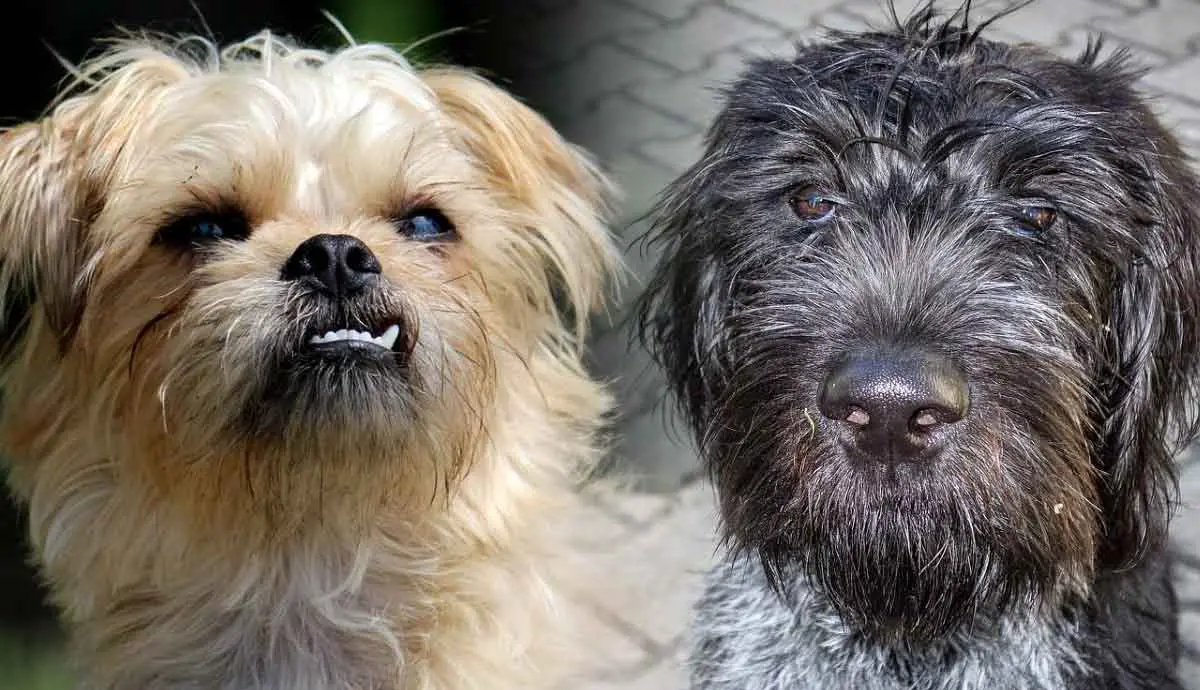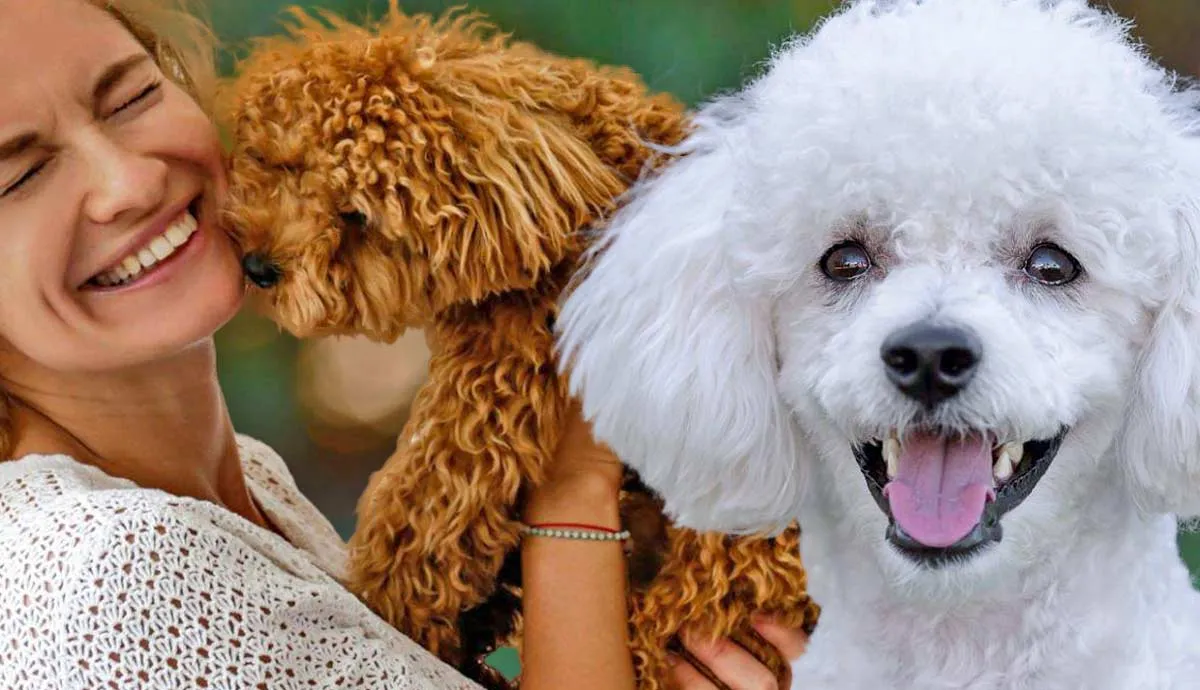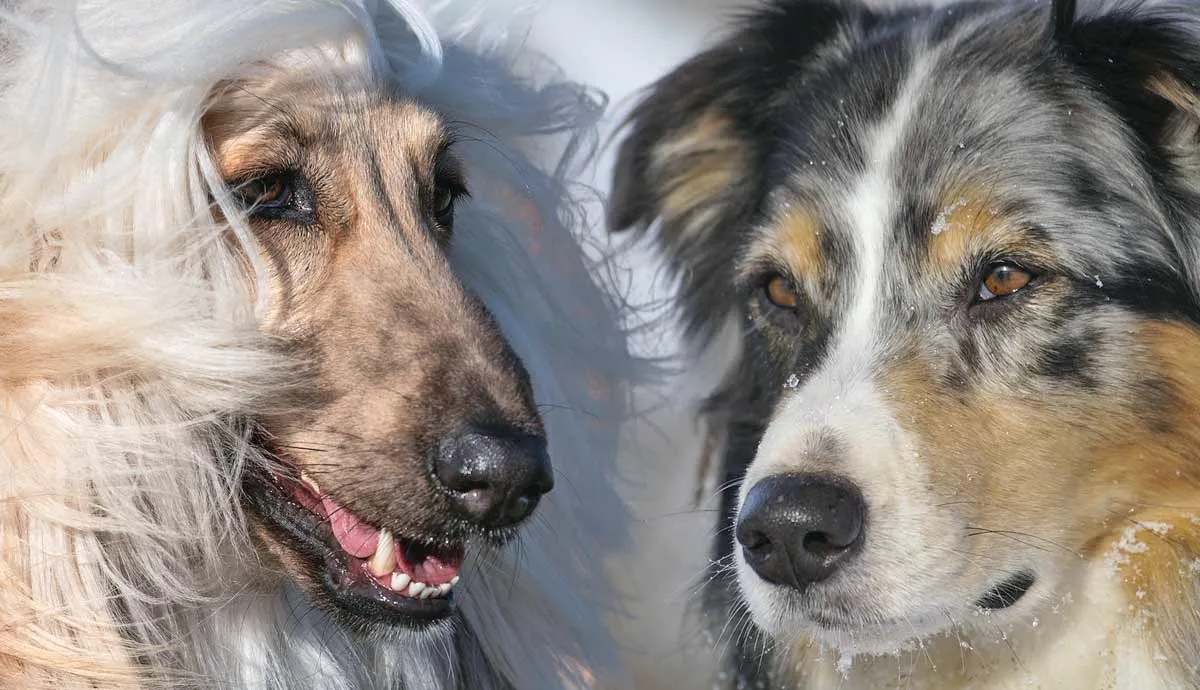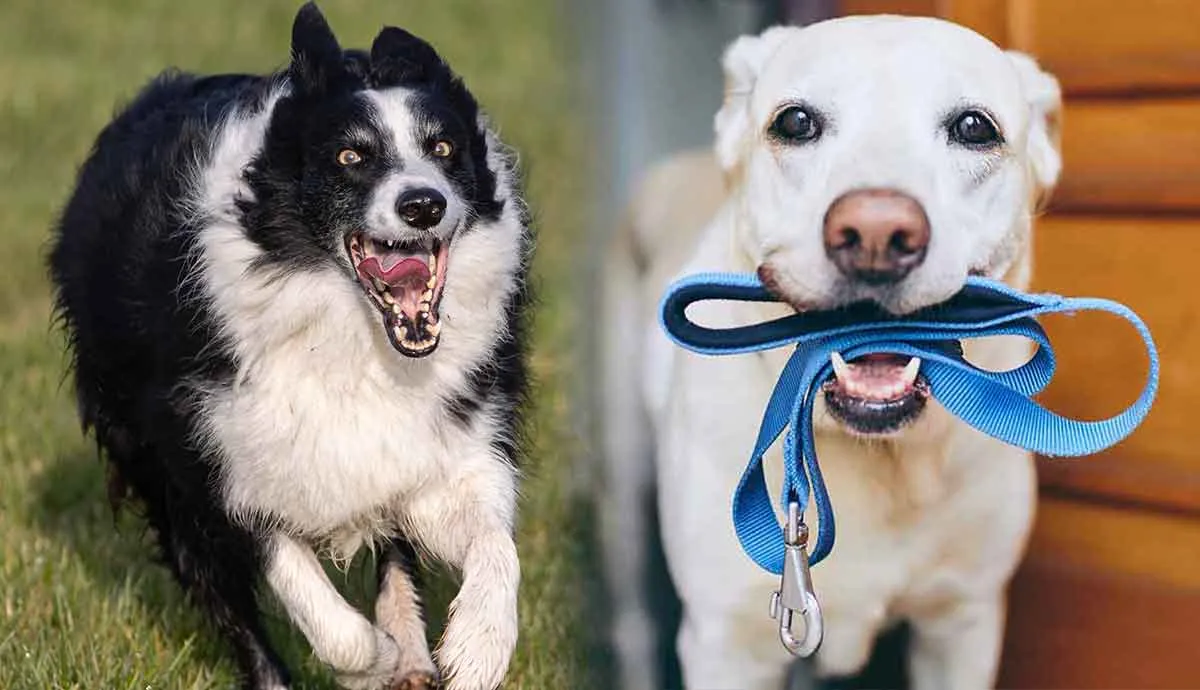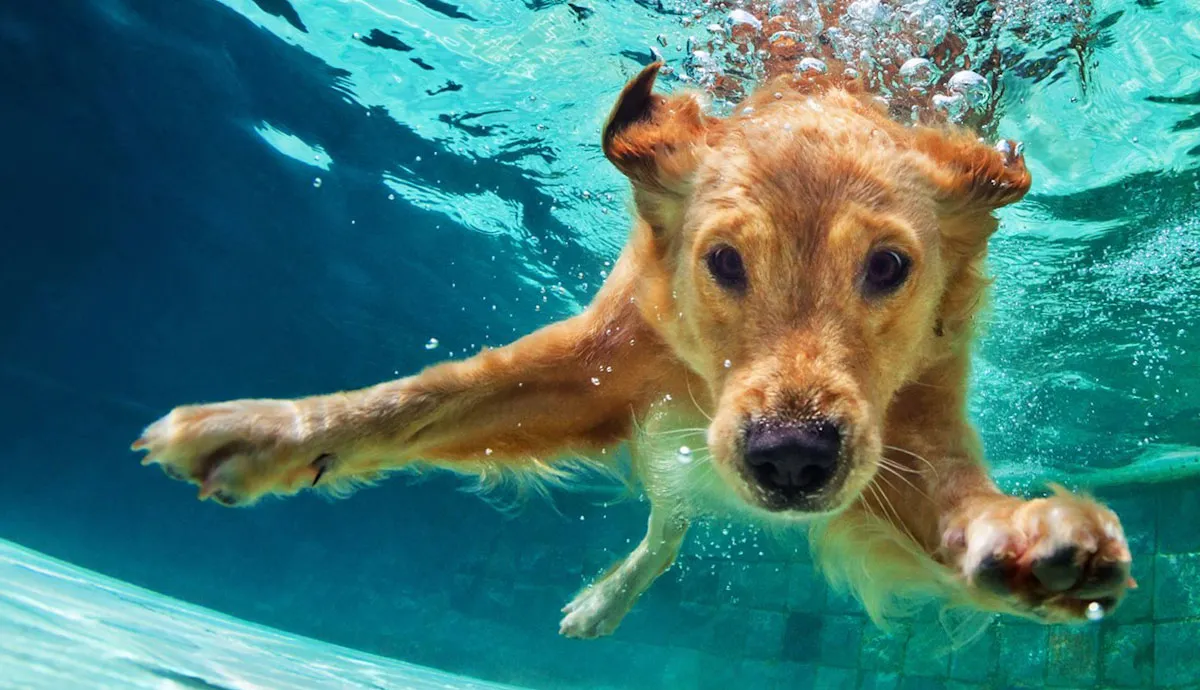Most wirehaired dog breeds are terriers. They were bred with this rough and bristly hair to give them better protection against the elements when hunting rats and other small game.
The Airedale Terrier, Scottish Terrier, Dachshund, Brussels Griffon, and Irish Wolfhound are examples of wirehaired dog breeds.
Read on to learn more about these five wirehaired dog breeds and how to care for their coats.
1. Airedale Terriers
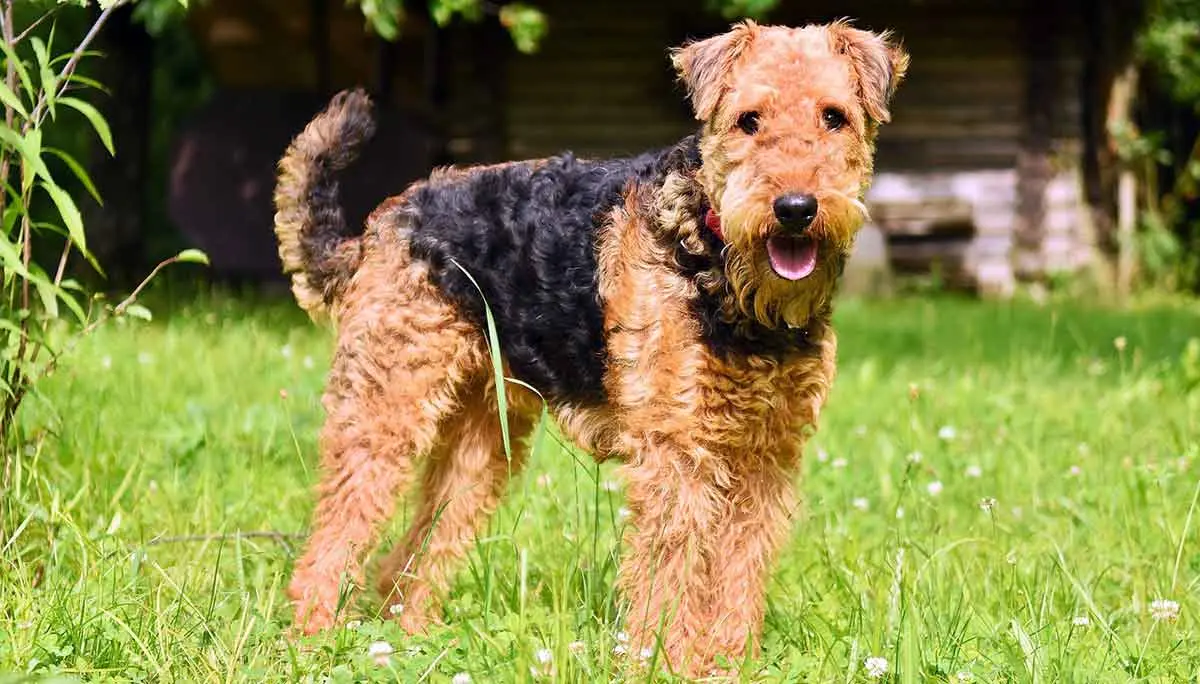
Coming either in black and tan or grizzle and tan, the Airedale Terrier has a luscious wiry coat. This breed needs relatively little maintenance. Weekly brushings do the trick to keep the coat looking fresh. These dogs do well with full grooming where the dog is bathed and brushed around three to four times a year.
This dog breed’s coat, as well as that of other wirehaired breeds, is also maintained through a process called plucking or stripping. To pluck, you take your non-dominant hand and hold an area of the dog's skin taut. Then, you remove some of the dull, dead hairs with your dominant hand by pulling them down and straight out. You repeat this all over your dog’s body.
Owners of show dogs typically do this method a few months before the dog is shown to make sure the coat will be perfect for the event. This helps to prepare the dog for showing and gives them shinier, healthier-looking coats.
2. Scottish Terriers
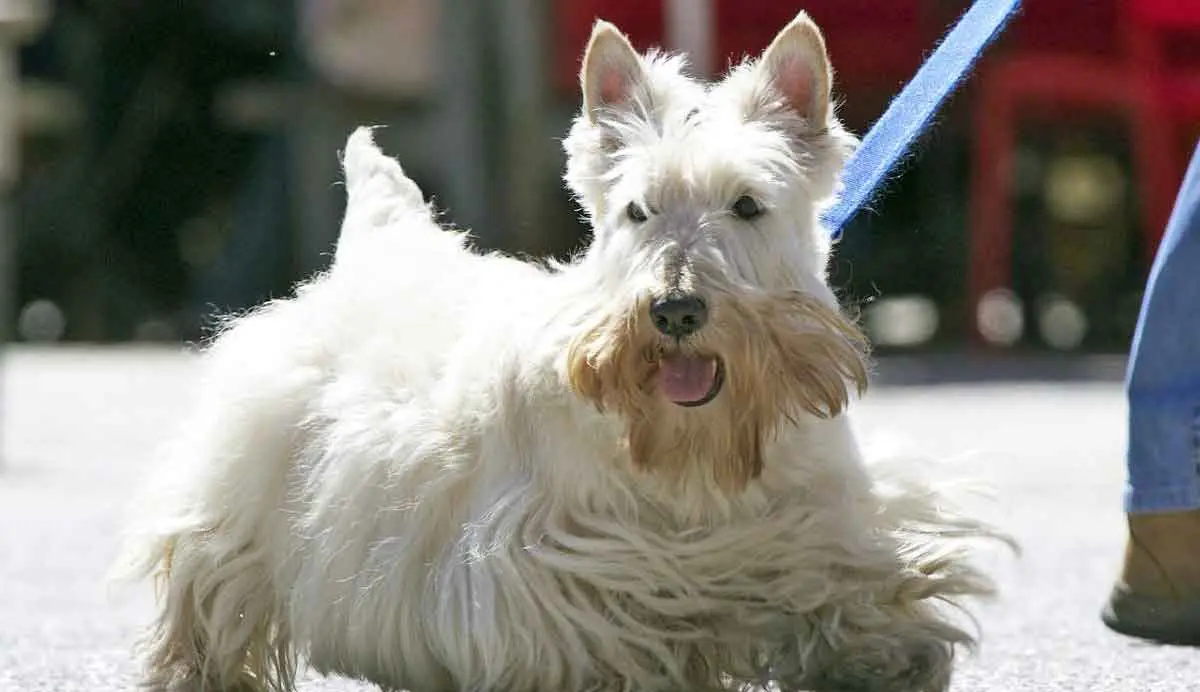
Another member of the terrier family, the Scottish Terrier is one of the more recognizable wirehaired dog breeds. This spirited and independent dog has a coat that can be black, black brindle, brindle, red, red brindle, silver brindle, or wheaten. These dogs need regular grooming to keep their coats in optimal condition.
The second method of grooming wirehaired dogs is called rolling. In this method, you simply pluck out little bits of dead coat hairs here and there over time. This takes about five minutes and can be done at any time of the year. It does not make your dog look bald or patchy and maintains your dog’s coat the same way as plucking. This method works great on the Scottish Terrier.
You’ll also want to make sure to get his beard and eyebrows clipped every six to eight weeks. This prevents crust from building up around the eyes, along with stains from tearing.
3. Dachshunds
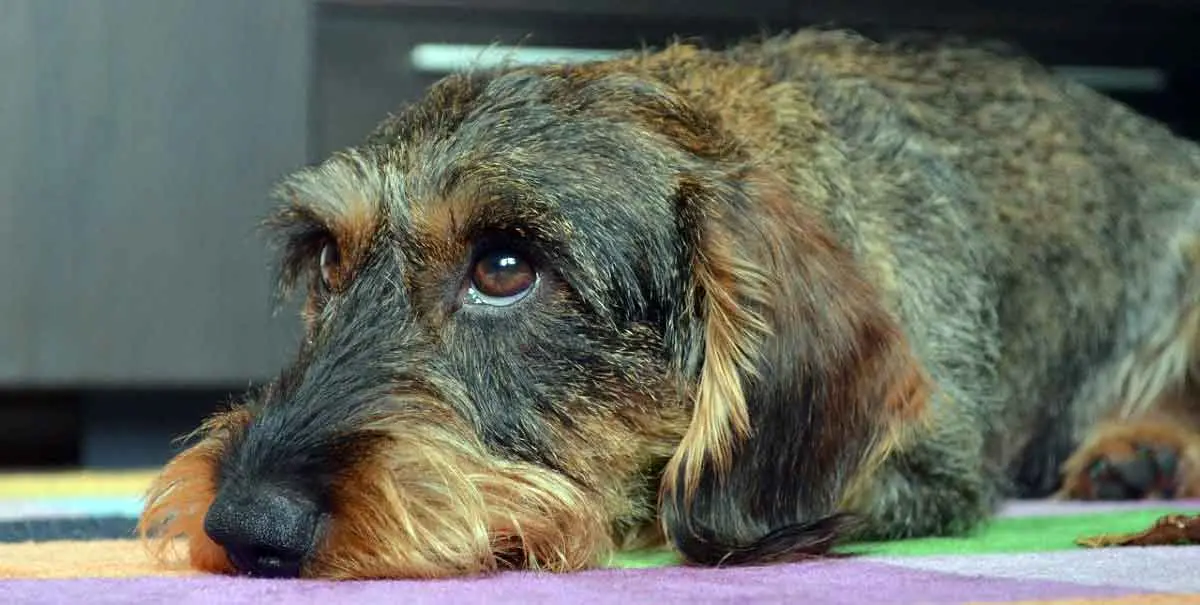
Dachshunds are lively and stubborn small dogs with long torsos and short legs. Their coats come in three varieties: smooth, wirehaired, and longhaired. They come in a myriad of patterns and can be brindled, dappled, piebald, or sable. Due to their short stature, Dachshund coats may grow long enough to drag on the ground and pick up debris, which can cause matting.
So, it’s important to check daily for any knots or dirt under their bellies. You also should hand strip their hair to maintain the coat's luster. These dogs also often need their beards and eyebrows trimmed. You should brush a wirehaired Dachshund several times a week. Bathing should be done three to four times a year. If you wash a wirehaired dog too often, it strips the sebum (oils) from their fur that insulates them.
If you perform a complete strip of your wirehaired Dachshund, you should complete this grooming method at least two to three times a year. Do not take clippers to a wirehaired dog coat, or the fur will lose its consistency.
4. Brussels Griffon
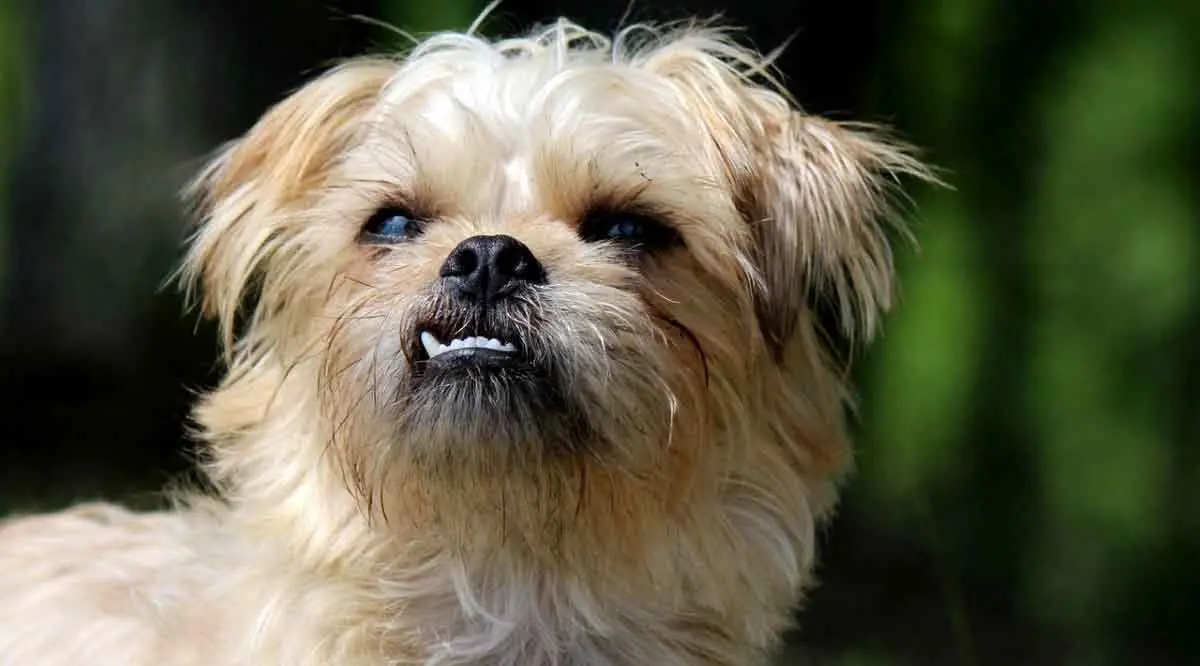
The Brussels Griffon is an alert and curious dog in the toy group. They come in coat colors such as beige, black, tan, and red without any markings. They come in both smooth and rough coat varieties. The rough-coated Brussels Griffon does not shed much. This type is often clipped to have a distinctive beard.
To clip your dog’s beard, you should hold your dog’s face elevated and out, while the dog is restrained with a leash. Use a bristle brush to remove tangles. Then, use a metal comb to work through the beard. Next, take a pair of scissors, pointing away from your dog and trim the hair to the desired length.
You can also get your dog professionally trimmed and clipped at many local and commercial groomers. Some vets also have grooming services.
5. Irish Wolfhounds

The dignified and calm Irish Wolfhound is a large dog breed that has a coat that comes in a variety of colors with white, black, and gray markings. These dogs have a wiry double coat that is harsh on the outside to protect them from the weather and a soft undercoat beneath for insulation.
They shed all throughout the year and benefit from a weekly brushing. This will remove the dirt and loose hair that can cause matting. You may also wish to practice hand stripping or plucking the coat to keep it looking fresh and healthy. When you wash a wirehaired dog, be sure to get a product that is meant for their hair type. You may also want to condition the hair every few baths.
Wirehaired Dogs Suit Many Lifestyles

Wirehaired dog breeds have rough, bristly hair that sheds very little and is perfect for people with allergies. Caring for wirehaired dogs involves brushing their coats with a pin brush weekly. Owners also often either take the coat down or roll the coat of wirehaired dog breeds. Removing the old hair on your dog gets rid of debris and stimulates the skin to grow new, healthy hair. If you want to save time, you can take your wirehaired dog to a professional groomer to care for their coat.
